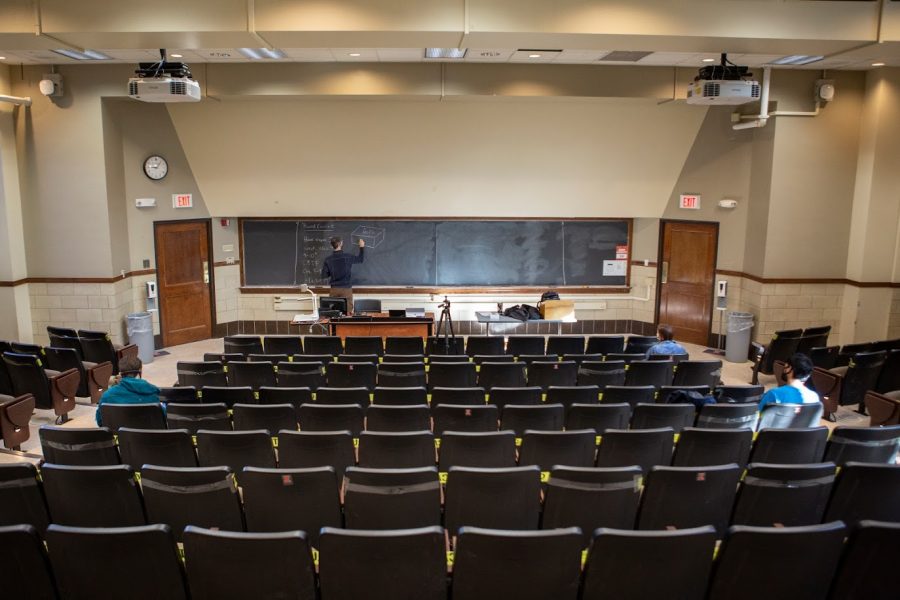Hybrid instruction set to continue in spring
Three students sit socially distanced during professor Peter Abbamonte’s hybrid class on Monday. Abbamonte teaches his class both in person and through Zoom at the same time.
November 5, 2020
As the fall semester comes to an end, the University is busy finalizing plans for the spring semester. With COVID-19 remaining a paramount concern, the University plans to continue its hybrid instruction format next semester.
“It really was pretty clear that the spring semester is going to look a lot like the fall in terms of (having) some in-person instruction, and lots of online instruction,” said Kevin Pitts, the Vice Provost for Undergraduate Education, and co-chair of the University’s COVID-19 Academic Affairs Task Force.
Efforts have been focused on improving the quality of hybrid education and addressing issues that came up this fall semester.
Pitts states that there has been “a lot of general progress made” with hybrid instruction, as faculty share amongst themselves different tools and techniques they have successfully used to facilitate online or hybrid learning this semester.
“We all understand that most students would really rather physically be in the classroom,” said Pitts.“But we’re doing the best we can in these difficult times.”
Get The Daily Illini in your inbox!
Additionally, the University has “learned some lessons” about how to handle cases where students and faculty are unable to be present for in-person classes.
Pitts said that some faculty and course instructors are in high-risk groups for COVID-19 and thus must teach remotely. Additionally, many students, both on and off campus, are unable to attend classes in-person due to medical or safety reasons.
To accommodate these circumstances, there have been instances of courses having a “blended model,” where some students attend class in-person while others are remote, which the University “is getting better at,” Pitts said.
However, especially with the recent changes to the academic calendar, there have been some concerns about the current plan for instruction next semester.
The current academic calendar calls for three “Day Off” days (where there are no classes) on Feb. 17, March 24 and April 13.
These seemingly sporadic breaks from instruction have led to concerns of academic disruption especially for courses with a rotating schedule, as well as concerns over potential burn-out that faculty and students may experience.
Bruce Rosenstock, a professor in Religion and member of the University Senate, attempted to remove these “Day Off” days from the proposed academic calendar during a University Senate meeting.
Instead, Rosenstock proposed that the University Senate allow for instructors to designate up to three class periods as non-instructional “reading periods.”
“(The proposed academic calendar) does not consider the negative impacts on faculty and students of a no-break pace of instruction mitigated only by once-a-month ‘Days Off’ that may or may not correspond to a teaching day in a given class,” said Rosenstock in a University Senate meeting on Oct. 19.
While adopting the new academic calendar, the University knew about the potential for academic disruptions, which the faculty are currently planning to work around.
“We recognize that they’re not the same as a full week of spring break, but they’re a whole heck of a lot better than nothing,” Pitts said.
Regardless, the University believes that the three “Day Off” days are crucial to mental health and wellness.
“We would all prefer to have spring break this year,” said Pitts. “But the modifications were to try to maximize health and safety.”







